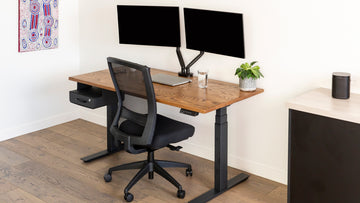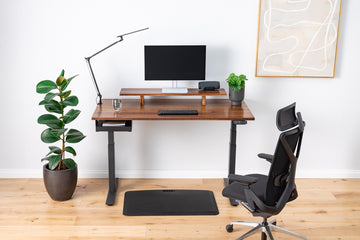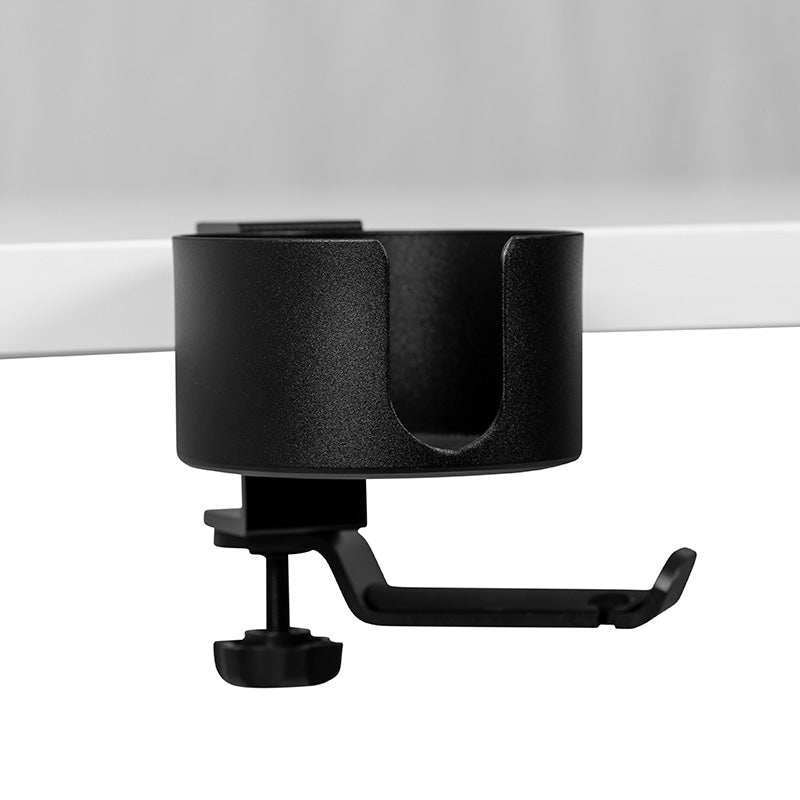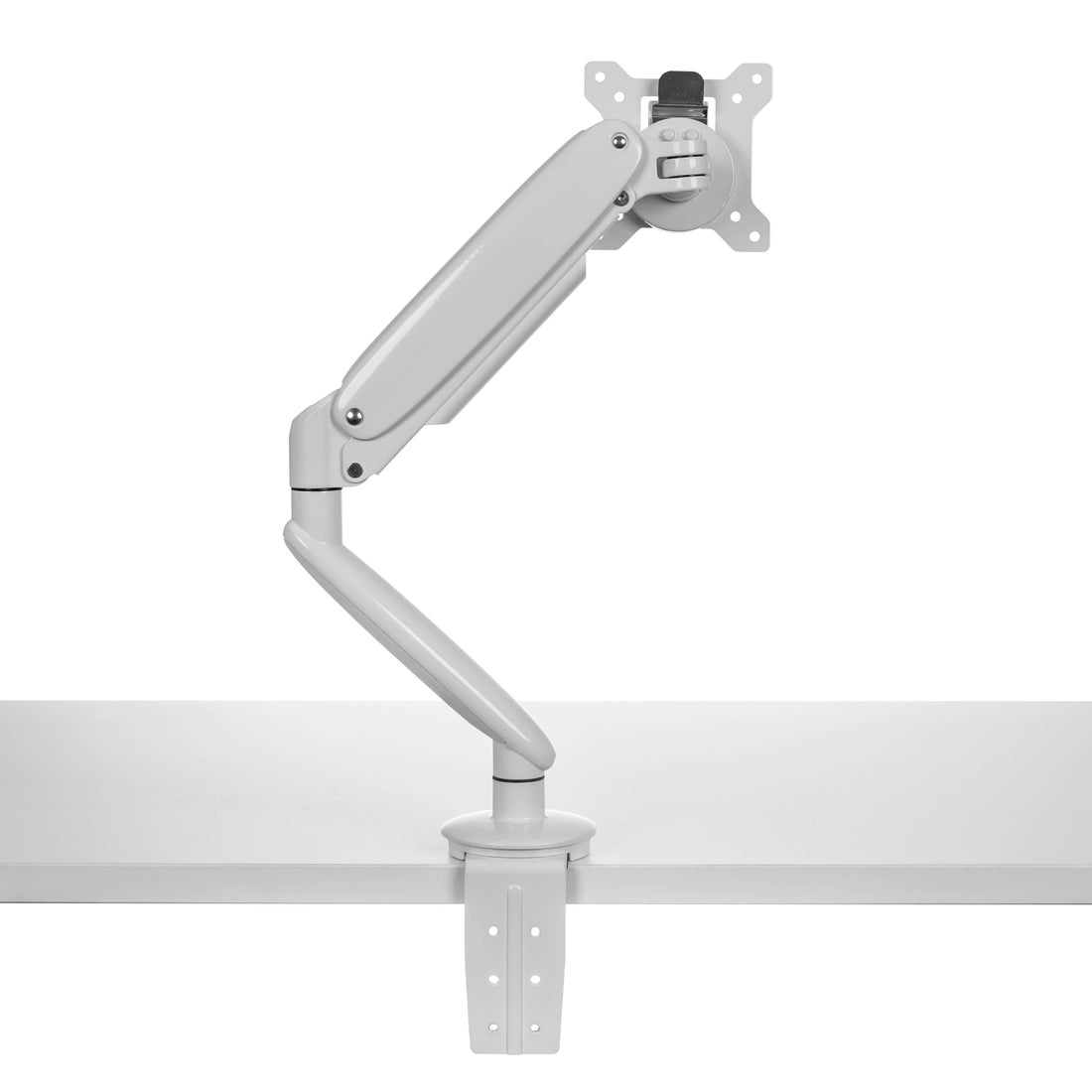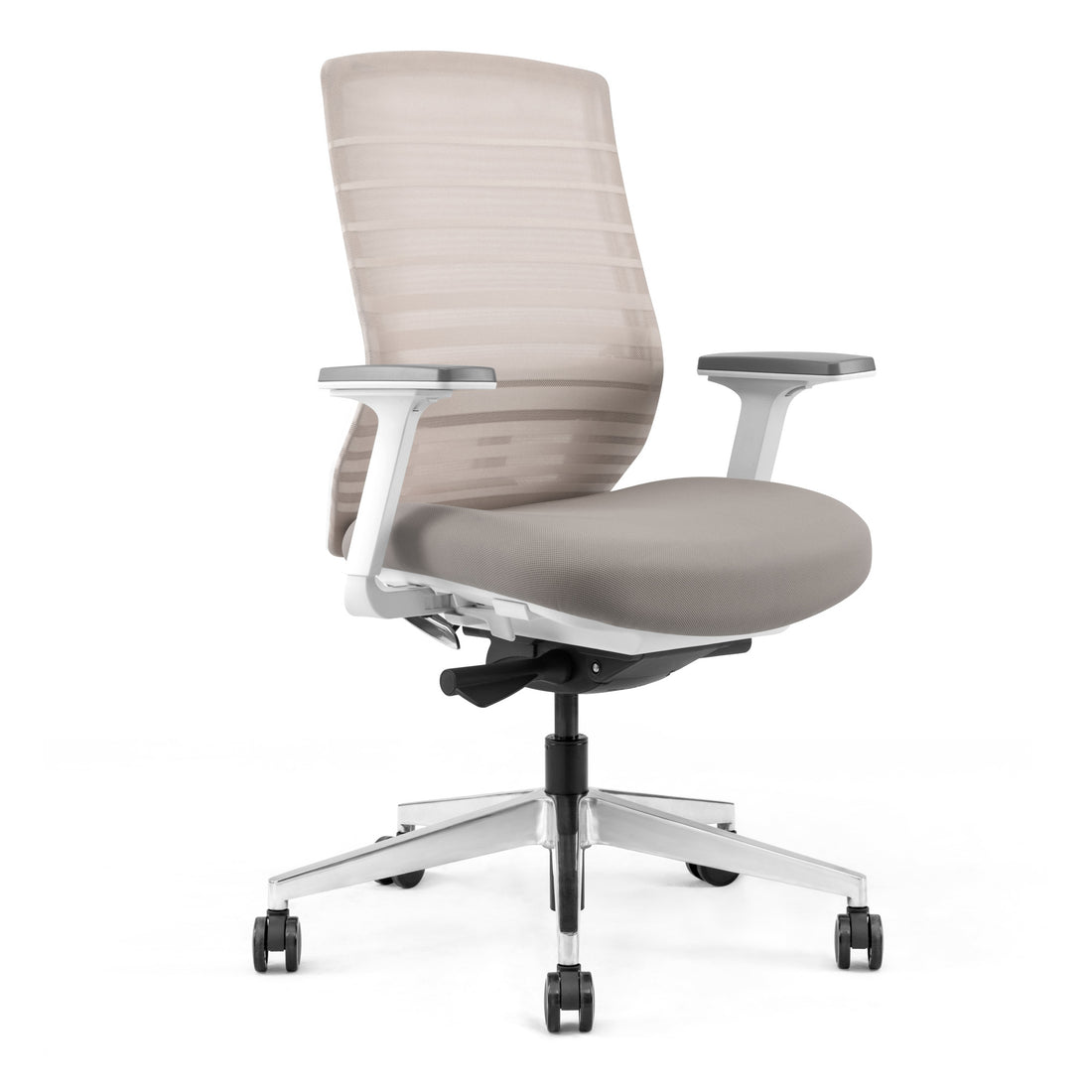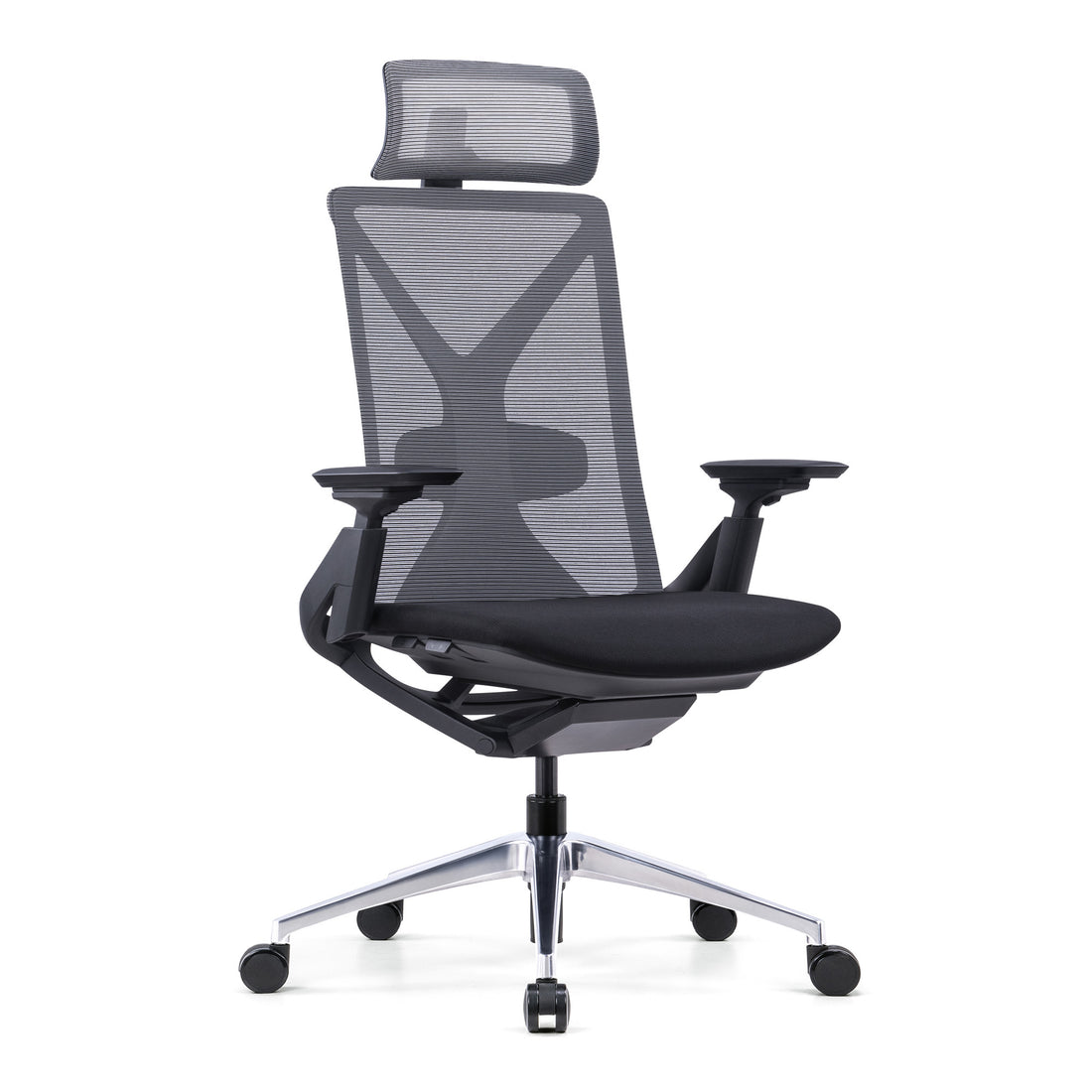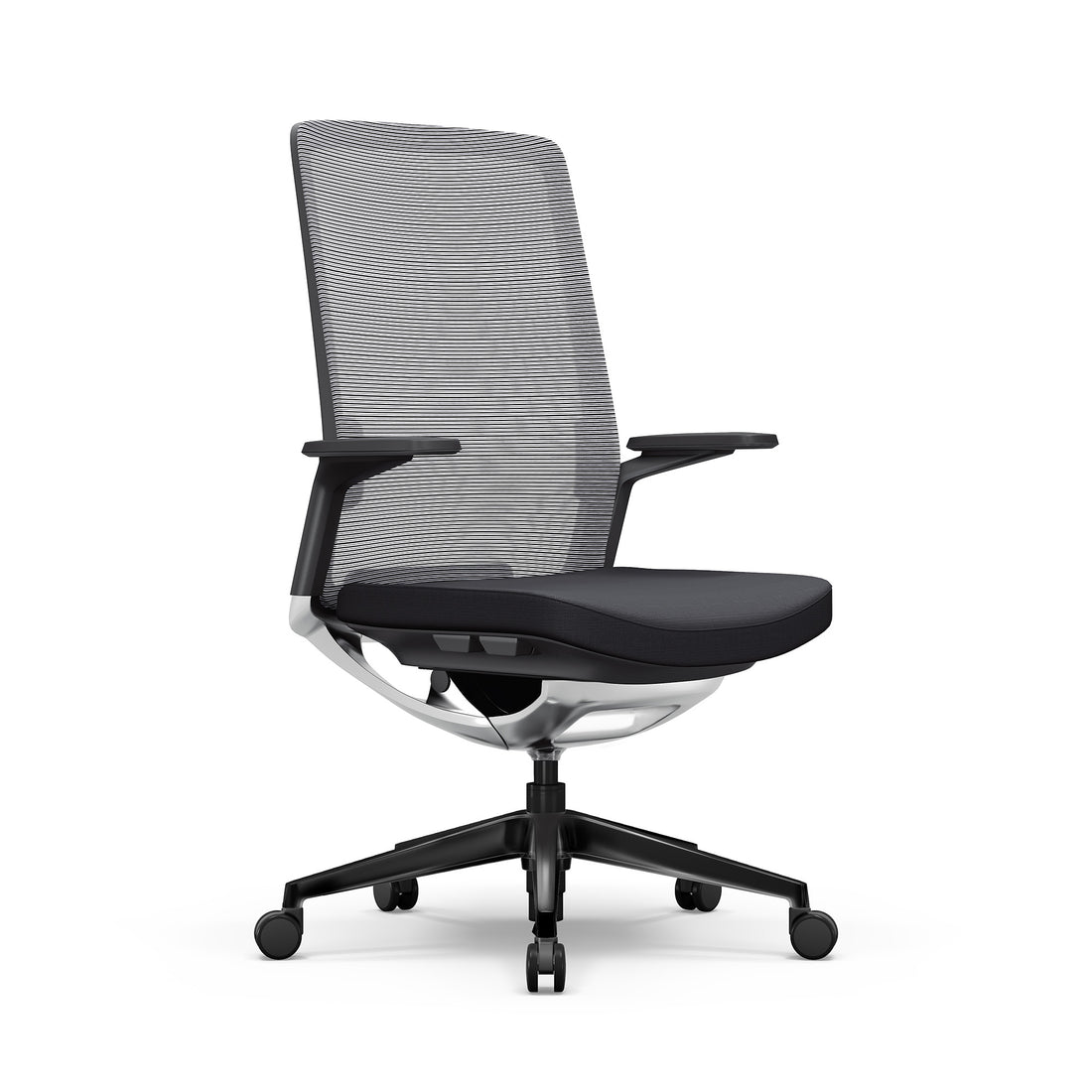Rumor has it that sitting has become the modern-day equivalent of smoking. While it might not be quite as alarming, prolonged sitting can indeed strain your spine, shoulders, back, and neck, as noted by Safe Work Australia. But let's face it – some tasks simply require a seat and undivided attention. So, what is the solution?
This is where office ergonomics steps in, and it's not just a trend about arranging furniture and gadgets; it's a science-backed strategy for a healthier work-life balance.
According to the World Health Organization, musculoskeletal disorders are considered the leading cause of disability worldwide, with low back pain taking the top spot in 160 nations. Office Ergonomics strives to establish a safer work environment by designing workspaces that encourage proper posture, minimise muscle strain, and decrease repetitive movements. Ergonomics isn't a luxury, it's a necessity aimed at securing occupational safety and optimal productivity.
The Science of Ergonomics
In today's fast-paced work culture, where we're often stuck to our desks for the better part of the day, it's only natural to pinpoint workspace design as the primary suspect for back pain
Unlike a toxic manager, office ergonomics is made to adapt to the worker rather than vice versa. The official definition by Miriam Webster defines ergonomics as an applied science, concerned with designing and arranging things people use so that people and things interact most efficiently and safely. It's science! Who in the right mind would argue with that?
The ultimate goal of ergonomics is to enhance workstation design to align with the body's natural flows and promote a neutral posture. This helps minimise the chances of musculoskeletal disorders like back pain, wrist pain, and repetitive strain injuries (RSIs) while improving work performance and productivity at the same time. The significance of office ergonomics cannot be overstated.
Benefits of Proper Ergonomics
The upsides of ergonomics extend far beyond fancy chairs and sleek desks. It's a wise investment that emphasises health over appearance. Implementing ergonomic principles in your workspace doesn’t only enhance productivity but also renders work more enjoyable. Check your posture, and let’s dive deeper into this topic.
1. Ergonomics as the Science of Comfort
Hands down, comfort is the most obvious and immediate perk of good ergonomics. Imagine settling into your workspace and feeling supported by an ergonomically designed chair that conforms to the contours of your body. Your desk is adjustable, so you can set it at the perfect height, allowing your arms to rest comfortably as you type. Proper ergonomics replaces discomfort with a sense of ease, enabling you to focus fully on your work duties. Besides, by implementing ergonomic principles such as adjustable furniture and ergonomic accessories, you will likely maintain proper posture and decrease the chances of chronic pain shadowing your daily comfort sessions in the long run. Perhaps that's why Gintux predicts a yearly growth of 6.7% in the ergonomic office furniture market by 2025. Those are some comforting stats!
2.Sitting the Right Way
A sedentary lifestyle has become a devastating routine, leading to a rise in posture-related issues and spinal health problems. According to the Australian government, 56% of Australians need to be more physically active. Given that we still need to sit down to accomplish certain tasks, why not do it properly? Good ergonomics encourages proper posture by promoting neutral body positions and providing adequate support for the spine. By aligning the body correctly, ergonomic furniture and accessories help alleviate the strain on the musculoskeletal system, reducing the risk of developing chronic back pain and underlying spinal disorders. To take a step further, adjustable desks are an absolute game changer, especially when battling physical inactivity. Alternating between sitting and standing could be the most ergonomic way to go about your workday.
3. Productivity Booster
Beyond physical aspects, correct ergonomics also positively influences the mind. Squirming in your chair, restlessly searching for the right posture to avoid pain, is not the right way to generate focus and creativity. According to Gintux, 95% of workers report that ergonomics help prevent physical discomfort. If you didn't have to constantly battle this discomfort and strain your body to perform necessary tasks, you would have all that energy and focus to channel towards your work. Hence, investing in ergonomics isn't just a wise choice; it's a win-win strategy. You stand to gain increased productivity, fewer distractions, and sustained concentration levels throughout the day.
Consequences of Improper Ergonomics
While good ergonomics completely lack negative consequences, the pitfalls of poor ergonomics are more than enough. From backaches to stiff necks, our bodies bear the brunt of improper workspace setups, transforming our daily tasks into a dreadful battle against discomfort and pain. And there is more…
1. When Discomfort Becomes Chronic Pain
Chronic pain is like a boomerang that just keeps coming back even when the game is over – it is frustrating, strenuous, and hard to shake off. Sitting in chairs that lack proper support or working at poorly designed and inflexible workstations leads to postural deformities and muscle compensations. What begins as mere physical discomfort can snowball into chronic conditions, significantly impairing daily life and productivity. It's a vicious cycle, starting with discomfort and evolving into persistent pain, leading to prolonged recovery periods. It is a chain reaction you should rather break right at the start.
2. Distraction and Absenteeism
Sitting through a meeting in an uncomfortable chair can feel more like enduring a marathon. Poor ergonomics sets off a domino effect of restlessness, distraction, and diminished efficiency, directly impacting workplace productivity. When people are in pain or discomfort, their attention drifts from tasks, often requiring more breaks to alleviate their uneasiness. It's only a matter of time before these issues take a toll on the organisation's bottom line and compromise workforce turnover. Workers experiencing discomfort or pain as a result of inadequate ergonomic conditions may be more likely to take time off work to seek relief and recover from injuries or postural deformities. This means higher absenteeism and a dodgy gap between you and your job. Investing in proper ergonomics isn't just a smart choice – it is a job saver!
3. A Recipe for Mental Strain and Fatigue
Poor ergonomics isn't just a pain in the neck; it's a drain on mental health too. Awkward positions cause restlessness and disrupt workflow while increasing cognitive load, making it harder for workers to think clearly and make important decisions. Additionally, the stress of dealing with chronic discomfort can contribute to overall feelings of tension and anxiety, further impacting mental health. Addressing poor ergonomics isn't just about providing comfy chairs and fancy desks; it's about creating an environment where you can thrive physically and psychologically.
Understanding Ergonomics Risk Assessment
As serious workplace injuries decline, musculoskeletal disorders prevail and rise. That’s exactly why workplaces have begun prioritising comprehensive ergonomic assessments. They represent a starting point towards safe and properly optimised workstations.
An ergonomic assessment is a systematic process that aims to identify and evaluate potential hazards in the workplace that can cause musculoskeletal disorders (MSDs) or injuries to employees. Awkward postures, repetitive movements, forceful exertions, contact stress, and environmental factors are among the commonly encountered risks.
This assessment aims to eliminate any risk factors which can lead to measurable improvements in the work environment. For instance, possible office environment improvements include standing desks, adjustable chairs, footrests, ergonomic keyboards, lumbar support, and more. The market keeps expanding as we speak!
Big companies and organisations often bring in professionals and use tools and methods like WISHA or NIOSH to measure workplace risk factors effectively. But you can also do this assessment at home by following a couple of simple guidelines. Think of it as a free health check-up for your workspace that should have been done ages ago.
The Assessment Process
Whether you're dealing with ongoing back pain or just wish to improve your office setup, you're in the right spot and one step closer to achieving ultimate workplace comfort.
In ergonomics, the golden rule is maintaining a neutral posture that ensures proper alignment of your joints. This involves sitting or standing in a relaxed, balanced manner, reducing tension and contact stress, while avoiding awkward positions and repetitions
We present you with the 2-in-1 office ergonomic checklist for neutral posture which offers immediate solutions, instantly eliminating any excuses for procrastination. Let’s get to work.
Chair & Desk
1. Are the height, seat, and back of the chair adjustable?2. Are your feet fully supported by the floor while seated?
3. Does your chair provide support for your lower back?
4. Do you feel pressure from the chair seat on the back of your knees?
5. Do your armrests allow you to get close to your workstation?
To optimise your seating, start by obtaining a fully adjustable chair and height-adjustable desk. Consider using a footrest for additional support. Ensure you have a proper chair that fits your body type and provides adequate lumbar support. Adjust the seat pan and back support to your liking, and customise further by adjusting or removing the armrests as needed.
Mouse & Keyboard
6. Are your keyboard, mouse, and work surface at your elbow height?7. Are frequently used items within easy reach?
8. When using your keyboard and mouse, are your wrists straight and your upper arms relaxed?
9. Is your mouse at the same level and as close as possible to your keyboard?
To ensure optimal ergonomics at your workstation, start by adjusting the height of your workstation, keyboard, and chair to achieve a comfortable position. Consider switching to a standing desk. Arrange your workstation layout as needed for better accessibility to commonly used tools. Position your keyboard flat, avoiding propping it up on keyboard legs, as this can lead to awkward wrist postures. Pro tip: rest your dominant hand by alternating mouse usage with your non-dominant hand.
Monitor
10. Is your monitor positioned directly in front of you and slightly below eye level?11. Is your monitor positioned at least an arm’s length away?
12. Is your monitor and work surface free from glare?
13. Do you have appropriate lighting for reading or writing documents?
Reposition your monitor to ensure it is directly in front of you and at least an arm's length away. Consider replacing your monitor with a flat screen, if necessary, as it takes up less space. Adjust the monitor height slightly below eye level by adding or removing a monitor stand as needed. Reduce glare by adjusting overhead lighting, covering windows, or obtaining an anti-glare screen. Ensure adequate lighting for reading or writing documents by obtaining a desk lamp and placing it on the opposite side of your dominant hand.
Breaks
14. Do you take postural breaks every 30 minutes?15. Do you take regular eye breaks from looking at your monitor?
Remember to take postural breaks every 30 minutes by setting reminders to avoid prolonged sitting. Tend to alternate between sitting and standing positions. Ensure you take regular eye breaks from staring at your monitor to reduce strain and fatigue.
Laptop
16. Are you using your laptop for prolonged periods?
Obtain a full-sized external keyboard and mouse, accompanied by a docking station with a full-sized monitor or a laptop stand.
Final thoughts
Now you are all set to transform your workspace into an ergonomic paradise. Focus on functionality over aesthetics when choosing office furniture. But don't get too cosy! No matter how comfy your chair is or how perfectly your keyboard fits you, remember to stand up and stretch. Besides the neutral posture, adjustability is key to ergonomic principles and a healthier body in the long run. Sitting all day, even in an ergonomic chair, isn't the solution. You have to mix it up a bit! Embrace up-and-down instead of a sit-down routine.

